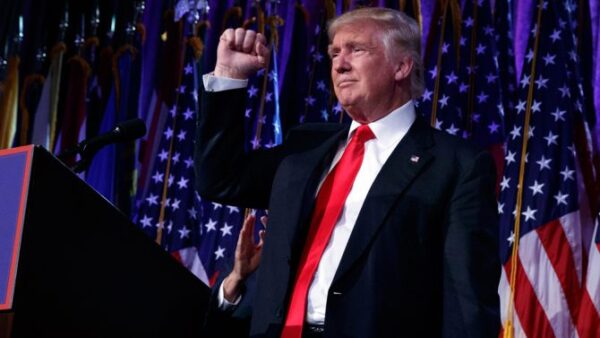President Trump’s historic initiative on Korea continues to confound critics and succeed in easing tensions and working toward de-nuclearization, and ultimately open relations and re-unification. Hours ago, both North and South Korean military units began removing mines from the Demilitarized Zone, usually reckoned to be the largest concentration of land mines in the world.
The land mine deployment was the first line of defense for both Koreas against invasion. This means that removal constitutes an actual, meaningful measure of trust. It demonstrates that the extensive talks between the two Koreas have produced results, for this move was agreed to earlier. Hyun-Jin Kim of the Associated Press reports:
The agreement to clear mines, the first such effort since the early 2000s, was among a package of tension-easing deals struck by the Koreas’ defense chiefs on the sidelines of a leaders’ summit last month in Pyongyang. Aiming to reduce conventional military threats, they also agreed to remove 11 front-line guard posts by December and set up buffer zones along their land and sea boundaries and a no-fly zone above the border to prevent accidental clashes.

Image credit: Rishabh Tatiraju.
Nobody is saying that Kim Jong-il is a fully trustworthy actor, and vigilance is still required on matters of destruction of North Korea’s nuclear arsenal. But this does mean that North Korea apparently is meeting its commitments and that further de-escalation moves may well be forthcoming.
Never forget that President Obama threw his hands up and did nothing to meet the growing threat of North Korea’s nuclear program. He reportedly told incoming President Trump in the limousine ride to the Capitol for inauguration that North Korea was the biggest national security hot potato he was handing off to Trump.
Trump, the deal-maker, has made a deal that promises an entirely new era. President Reagan taught us to “trust, but verify.” Presidents Trump and Moon appear to be following that policy, and it appears to be working magnificently.
President Trump’s historic initiative on Korea continues to confound critics and succeed in easing tensions and working toward de-nuclearization, and ultimately open relations and re-unification. Hours ago, both North and South Korean military units began removing mines from the Demilitarized Zone, usually reckoned to be the largest concentration of land mines in the world.
The land mine deployment was the first line of defense for both Koreas against invasion. This means that removal constitutes an actual, meaningful measure of trust. It demonstrates that the extensive talks between the two Koreas have produced results, for this move was agreed to earlier. Hyun-Jin Kim of the Associated Press reports:
The agreement to clear mines, the first such effort since the early 2000s, was among a package of tension-easing deals struck by the Koreas’ defense chiefs on the sidelines of a leaders’ summit last month in Pyongyang. Aiming to reduce conventional military threats, they also agreed to remove 11 front-line guard posts by December and set up buffer zones along their land and sea boundaries and a no-fly zone above the border to prevent accidental clashes.

Image credit: Rishabh Tatiraju.
Nobody is saying that Kim Jong-il is a fully trustworthy actor, and vigilance is still required on matters of destruction of North Korea’s nuclear arsenal. But this does mean that North Korea apparently is meeting its commitments and that further de-escalation moves may well be forthcoming.
Never forget that President Obama threw his hands up and did nothing to meet the growing threat of North Korea’s nuclear program. He reportedly told incoming President Trump in the limousine ride to the Capitol for inauguration that North Korea was the biggest national security hot potato he was handing off to Trump.
Trump, the deal-maker, has made a deal that promises an entirely new era. President Reagan taught us to “trust, but verify.” Presidents Trump and Moon appear to be following that policy, and it appears to be working magnificently.
via American Thinker Blog
Enjoy this article? Read the full version at the authors website: https://www.americanthinker.com/blog/




